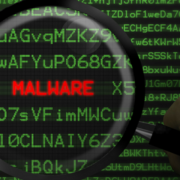6 IT security policies your business needs
No matter how big or small your organization is, it can benefit from a structured IT security policy. When IT security policies fall short, the consequences can become devastating for you and your customers. One example of this is the Cathay Pacific data breach of 2018, which sawdata for 9.4 million customers fall into the hands of hackers. The breach resulted in the company losing $204-million from its share value, too.
Fortunately, creating a high-level IT security policy goes a long way toward keeping your business safe. Here are some of the best suggestions all organizations can benefit from.
1. Create a document outlining your IT security policies
Documenting your IT security policies and outlining them to your existing employees is crucial. This document should feature permissible and denied activities regarding social media, emails, Internet usage, and more. As part of this, you may want to create a Non-Disclosure Agreement (NDA) and request that employees sign it. The same document should reach new employees too, with examples of what each aspect of the policy means.
2. Strict social media use policies
There’s no getting away from social media, but once something exists on sites such as Facebook and Twitter, it’s often difficult to retrieve. Simply deleting posts isn’t enough. If an employee’s friend captures the information they share in the form of a screenshot, it could become irretrievable forever. In addition to requesting that employees don’t share anything about your business on social media, place a block on social media sites via your business’s Internet. Doing so prevents accidental information sharing.
3. Back up your data to prevent loss of business
If your business does face a security breach, how well could it withstand a loss of data? For many businesses, dealing with a breach means ceasing most major operations until they can re-access the information that’s lost. One example of this isthe WannaCry ransomware attack, which saw more than 230,000 computers affected worldwide. When this happened, some businesses were unable to continue their usual activities or they were slowed down as they needed to use manual methods. Many businesses can’t offset the financial strains that come with such attacks, so ensuring you have a dependable backup plan that’ll allow you to continue day-to-day operations is essential.
4. Create an access control policy
Different employees at different levels may require unique levels of access to your IT systems. Restricting access isn’t about being unfair. By limiting the number of people who can access information on a need-to-know basis, you limit the number of chances information has to escape. Having an access control policy in place also alerts you to the occasions where an insider obtains unauthorized access to information.
5. Guidelines for remote access and cloud data usage
Using a cloud to store your data comes with lots of advantages. The biggest is that it allows for remote working, which is crucial when your business has a global presence. If you’re going to experience the benefits of using the cloud, you need to use the right IT security policies. Such policies may include acceptable usage, permitted devices, different levels of user access, and real-time threat monitoring. It’s better to take a custom approach, as different businesses require different levels of cloud security.
6. Provide your business with continuous monitoring
Although technology is always advancing, so are the number of threats against your IT system. Because of this, your business will benefit from continuous monitoring. This can include real-time threat detection, antivirus software, data encryption, and vulnerability reports. Brought together, all these actions and the analytics that come with them allow you to refine your business’s IT security policies against threats and strengthen them accordingly.
With the right IT security policies in place, you significantly increase your chances of keeping your business safe. Wherever possible, take a custom approach to ensure you remain protected against the threats that are unique to your organization.










